- Clone
- 53-2.1 (See other available formats)
- Regulatory Status
- RUO
- Other Names
- Thy-1.2
- Isotype
- Rat IgG2a, κ
- Ave. Rating
- Submit a Review
- Product Citations
- publications
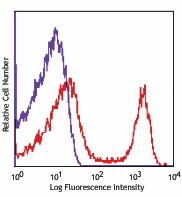
-

C57BL/6 mouse splenocytes stained with biotinylated CD90.2 (53-2.1), followed by Sav-PE (the FcR- mediated binding was blocked by pre-incubation with anti-mouse CD16/32, clone 93)
| Cat # | Size | Price | Quantity Check Availability | Save | ||
|---|---|---|---|---|---|---|
| 140313 | 50 µg | $59 | ||||
| 140314 | 500 µg | $201 | ||||
CD90.2 is a 25-35 kD immunoglobulin superfamily member also known as Thy-1.2, a GPI-linked membrane molecule. It is expressed on hematopoietic stem cells and neurons, all thymocytes, and peripheral T cells in Thy1.2 bearing mouse strains (Balb/c, CBA/J, C3H/He, C57BL/-, DBA, NZB/-). CD90.2 is a glycosylphosphatidylinositol (GPI)-anchored membrane glycoprotein involved in signal transduction. CD90.2 is involved in costimulation of lymphocyte proliferation and induction of hematopoietic stem cells differentiation. CD90.2 has been shown to interact with CD45.
Product DetailsProduct Details
- Verified Reactivity
- Mouse
- Antibody Type
- Monoclonal
- Host Species
- Rat
- Immunogen
- Mouse thymus or spleen
- Formulation
- Phosphate-buffered solution, pH 7.2, containing 0.09% sodium azide.
- Preparation
- The antibody was purified by affinity chromatography, and conjugated with biotin under optimal conditions.
- Concentration
- 0.5 mg/ml
- Storage & Handling
- The antibody solution should be stored undiluted between 2°C and 8°C. Do not freeze.
- Application
-
FC - Quality tested
- Recommended Usage
- Each lot of this antibody is quality control tested by immunofluorescent staining with flow cytometric analysis. For flow cytometric staining, the suggested use of this reagent is ≤0.06 µg per million cells in 100 µl volume. It is recommended that the reagent be titrated for optimal performance for each application.
- Application Notes
-
Additional reported applications (for the relevant formats) include: immunohistochemical staining1 of frozen tissue section, immunofluorescence2, and immunoprecipitation3. Does not react with Thy-1.1 (CD90.1).
-
Application References
(PubMed link indicates BioLegend citation) -
- Aldrich M, et al. 2003. J. Immunol. 171:5562. (IHC)
- Jameson J, et al. 2004. J. Immunol. 172:3573. (IF)
- Okada C, et al. 1990. J. Immunol. 144:3473. (IP)
- Product Citations
-
- RRID
-
AB_10643274 (BioLegend Cat. No. 140313)
AB_10643274 (BioLegend Cat. No. 140314)
Antigen Details
- Structure
- Ig superfamily, 25-35 kD
- Distribution
-
Hematopoietic stem cells and neurons, epithelial cells, fibroblasts, neurons, all thymocytes, and peripheral T cells of Thy-1.2 bearing mice
- Function
- Lymphocyte costimulation, proliferation, and differentiation of hematopoietic stem cells
- Ligand/Receptor
- CD45
- Cell Type
- Epithelial cells, Fibroblasts, Hematopoietic stem and progenitors, Neurons, T cells, Thymocytes
- Biology Area
- Apoptosis/Tumor Suppressors/Cell Death, Cell Biology, Immunology, Signal Transduction
- Molecular Family
- CD Molecules
- Antigen References
-
1. Borrello M, et al. 1996. Cell. Immunol.173:198.
2. Radrizzani M, et al. 1995. J. Neurosci. Res. 42:220.
3. Williams A, et al. 1982. Science 216:696. - Gene ID
- 21838 View all products for this Gene ID
- UniProt
- View information about CD90.2 on UniProt.org
Related Pages & Pathways
Pages
Related FAQs
- How many biotin molecules are per antibody structure?
- We don't routinely measure the number of biotins with our antibody products but the number of biotin molecules range from 3-6 molecules per antibody.
Other Formats
View All CD90.2 Reagents Request Custom Conjugation| Description | Clone | Applications |
|---|---|---|
| Purified anti-mouse CD90.2 (Thy-1.2) | 53-2.1 | FC,IHC-F,ICC,IP |
| FITC anti-mouse CD90.2 (Thy-1.2) | 53-2.1 | FC |
| Pacific Blue™ anti-mouse CD90.2 (Thy-1.2) | 53-2.1 | FC |
| Biotin anti-mouse CD90.2 (Thy1.2) | 53-2.1 | FC |
| PerCP anti-mouse CD90.2 (Thy1.2) | 53-2.1 | FC |
| PE anti-mouse CD90.2 (Thy-1.2) | 53-2.1 | FC |
| PE/Cyanine7 anti-mouse CD90.2 (Thy-1.2) | 53-2.1 | FC |
| APC anti-mouse CD90.2 (Thy-1.2) | 53-2.1 | FC |
| Brilliant Violet 605™ anti-mouse CD90.2 (Thy-1.2) | 53-2.1 | FC |
| Brilliant Violet 510™ anti-mouse CD90.2 (Thy-1.2) | 53-2.1 | FC |
| PerCP/Cyanine5.5 anti-mouse CD90.2 (Thy-1.2) | 53-2.1 | FC |
| Alexa Fluor® 700 anti-mouse CD90.2 (Thy-1.2) | 53-2.1 | FC |
| APC/Fire™ 750 anti-mouse CD90.2 (Thy-1.2) | 53-2.1 | FC |
| PE/Dazzle™ 594 anti-mouse CD90.2 (Thy-1.2) | 53-2.1 | FC |
| Brilliant Violet 421™ anti-mouse CD90.2 (Thy-1.2) | 53-2.1 | FC |
| APC/Cyanine7 anti-mouse CD90.2 (Thy1.2) | 53-2.1 | FC |
| Brilliant Violet 785™ anti-mouse CD90.2 (Thy1.2) | 53-2.1 | FC |
| Spark UV™ 387 anti-mouse CD90.2 (Thy1.2) | 53-2.1 | FC |
Customers Also Purchased
Compare Data Across All Formats
This data display is provided for general comparisons between formats.
Your actual data may vary due to variations in samples, target cells, instruments and their settings, staining conditions, and other factors.
If you need assistance with selecting the best format contact our expert technical support team.
-
Purified anti-mouse CD90.2 (Thy-1.2)
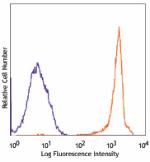
C57BL/6 mouse thymocytes stained with purified CD90.2 (53-2.... -
FITC anti-mouse CD90.2 (Thy-1.2)

C57BL/6 mouse thymocytes stained with CD90.2 (53-2.1) FITC -
Pacific Blue™ anti-mouse CD90.2 (Thy-1.2)
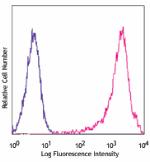
C57BL/6 mouse thymocytes stained with CD90.2 (53-2.1) PB -
Biotin anti-mouse CD90.2 (Thy1.2)
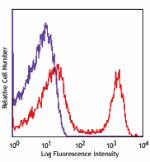
C57BL/6 mouse splenocytes stained with biotinylated CD90.2 ... -
PerCP anti-mouse CD90.2 (Thy1.2)
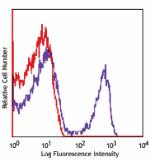
C57BL/6 mouse splenocytes stained with CD90.2 (53-2.1) PerCP -
PE anti-mouse CD90.2 (Thy-1.2)
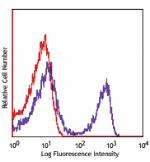
C57BL/6 mouse splenocytes stained with CD90.2 (53-2.1) PE -
PE/Cyanine7 anti-mouse CD90.2 (Thy-1.2)
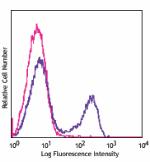
C57BL/6 mouse splenocytes stained with CD90.2 (53-2.1) PE/Cy... -
APC anti-mouse CD90.2 (Thy-1.2)
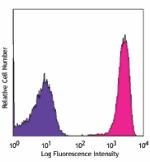
C57BL/6 mouse thymocytes stained with 53-2.1 APC -
Brilliant Violet 605™ anti-mouse CD90.2 (Thy-1.2)
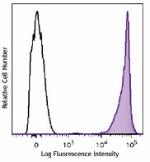
C57BL/6 mouse thymocytes were stained with CD90.2 (clone 53-... -
Brilliant Violet 510™ anti-mouse CD90.2 (Thy-1.2)

C57BL/6 mouse splenocytes were stained with CD90.2 (clone 53... -
PerCP/Cyanine5.5 anti-mouse CD90.2 (Thy-1.2)

C57BL/6 mouse splenocytes were stained with CD3e APC and CD9... -
Alexa Fluor® 700 anti-mouse CD90.2 (Thy-1.2)
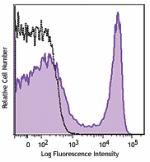
C57BL/6 mouse splenocytes were stained with CD90.2 (clone 53... -
APC/Fire™ 750 anti-mouse CD90.2 (Thy-1.2)

C57BL/6 mouse splenocytes were stained with CD90.2 (clone 53... -
PE/Dazzle™ 594 anti-mouse CD90.2 (Thy-1.2)
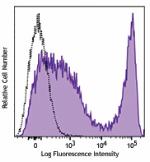
C57BL/6 mouse splenocytes were stained with CD90.2 (clone 53... -
Brilliant Violet 421™ anti-mouse CD90.2 (Thy-1.2)

C57BL/6 mouse splenocytes were stained with CD90.2 (clone 53... -
APC/Cyanine7 anti-mouse CD90.2 (Thy1.2)

C57BL/6 mouse splenocytes were stained with Alexa Fluor® 488... -
Brilliant Violet 785™ anti-mouse CD90.2 (Thy1.2)

C57BL/6 mouse splenocytes were stained with anti-mouse CD3 F... -
Spark UV™ 387 anti-mouse CD90.2 (Thy1.2)

C57BL/6 mouse splenocytes were stained with anti-mouse CD3 (...
 Login/Register
Login/Register 







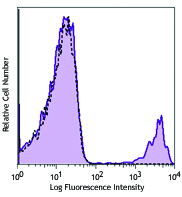






Follow Us